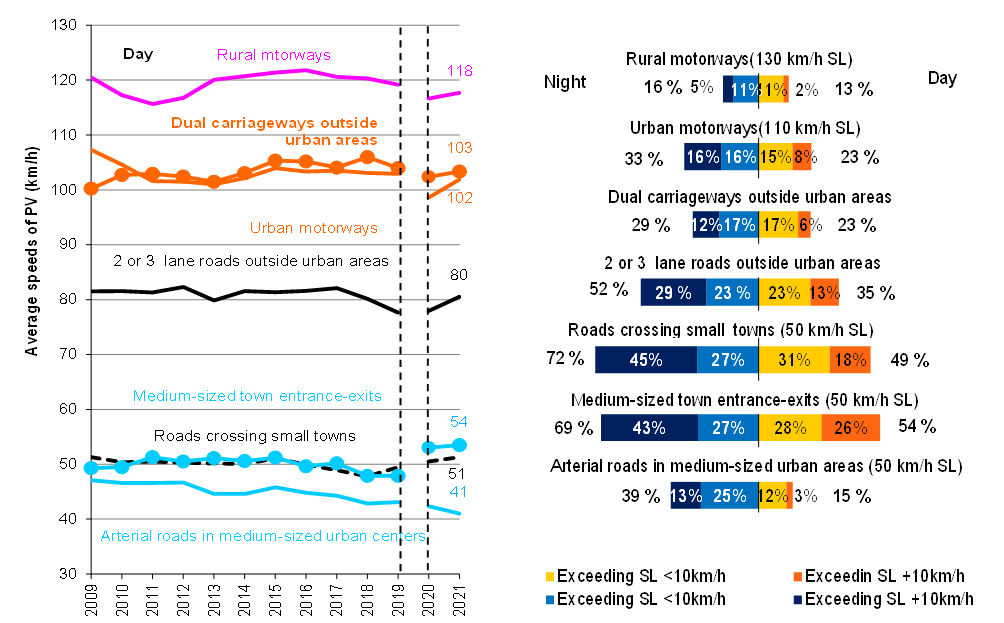In October 2022, the ONISR published a study on the observation of traffic speeds in 2021: speeds are increasing on almost all networks, with the exception of city centre arteries. This report is now available in English.
Summary of the results for 2021
The average speed of passenger vehicles measured during the day on dual 2 and dual 3 lanes carriageways has been re-evaluated downwards (+1.1 km/h on rural motorways and on dual 2 carriageways).
On two-way roads outside built-up areas, some of which affected by an increase in the speed limit to 90 km/h in 2021, the increase is 2.6 km/h by day and 2.1 km/h by night.
On roads crossing small towns, the average speed rises from 47.8 km/h in 2018 to 51.3 km/h in 2021 (+3.5 km/h in 3 years), with a slight increase in 1 year on roads entering and leaving medium-sized towns (+0.5 km/h, 53.5 km/h)
On the other hand, arterial roads in the center of average urban area have lower average speeds than in 2020 (41.0 km/h, -2.4 km/h compared to 2020).
In general, the following trends are observed:
- average car speeds are increasing, day and night, on almost all networks;
- on two and three lane roads in particular, the average speed is up sharply compared to 2020 after a start of increase last year;
- the rate of speeding is particularly high on roads crossing small towns and on the entrances and exits of medium-sized towns;
speeds at night are higher than during the day (except on rural motorways), with greater differentials on networks in built-up areas and on single carriageways outside built-up areas; - daytime car speeds are higher at weekends than on working days;
- the evolution of HGV speeds is more variable depending on the network, with a tendency to stabilise;
- commercial vehicle speeds, observed during the day and on working days only, are lower than those of cars.
Average speeds of passenger vehicles and rates of exceeding the speed limit in 2021 by type of network:

The full report and previous reports can be downloaded at the top right of the page (an English version is sometimes avalaible too).
In addition to the speed observatory, you will find the article from the behaviour observatory.
Comparisons of the results for 2021 with those from 2020 should be done with caution, as some observations usually carried out during the first semester could not be completed normally in 2020 due to the Covid-19 pandemic. In particular, the dual 2 and dual 3 lanes carriageways were impacted.
The speeds measured by the observatory do not claim to be absolutely representative of traffic on the entire French road network. However, it is considered that their evolution over time is representative of the general evolution of behaviour, in other words that these observations are relatively representative, provided that the panel of observation points is stable over time. The results of the speed observatory are therefore intrinsically linked to the panel of measurement points that feed it. It should be noted that there are breaks in the series linked to the change in methodology between 2019 and 2020.

